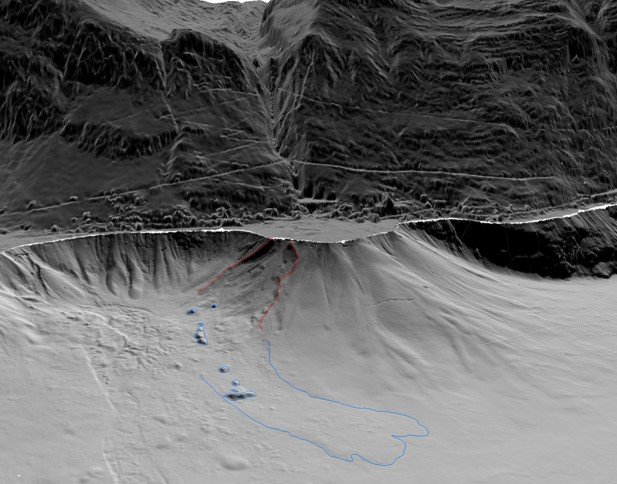S4LIDE - Hallstatt: Studying the Significance of Subaqaueous Slides in Lake Hallstatt
Funded by the Austrian Academy of Sciences (2021-2022)
PI: Univ.-Prof. Dr. Michael Strasser
National and international collaborators:
Dr. Jasper Moernaut, University of Innsbruck
Dr. Kerstin Kowarik, Natural History Museum Vienna
Prof. Flavio Anselmetti, University of Bern
Dr. Stefano Fabbri, University of Bern
Dr. Stefan Lauterbach, Kiel University
Prof. Achim Brauer, GFZ German Research Centre for Geosciences
A preceding ÖAW ESS-IGCP S4LIDE-Austria project has systematically analyzed and investigated limnogeological datasets of different Austrian lakes for subaquatic landslides research and identified the steeply incised valley-occupying intra-mountainous Lake Hallstatt as highly promising natural laboratory for subaquatic landslide research (Strasser et al., 2020). The very high activity of delta slope failure / sediment mass transport processes, as well high stratigraphic preservation potential of individual events, due to very high background sedimentation rate, provides a rather unique setting in a global comparison, but extensive efforts in scientific drilling are required to completely sample this promising high-resolution archive.
Within the this ÖAW ESS-IGCP S4LIDE-Hallstatt project we will piggy-back the Hipercorig-Hallstatt-History (H3) Drilling Project (led by PI Michael Strasser (Univ. Innsbruck) and ÖAW S4LIDE Hallstatt collaborators Kerstin Kowarik (Natural History Museum Vienna), Flavio Anselmetti and Stefano Fabbri (Univ. Bern), Achim Brauer (GFZ Potsdam) and Stefan Lauterbach (Univ. Kiel)) that aims at sampling Lake Hallstatt's complete stratigraphic succession with a new innovative hydraulic coring system. With a dedicated focus on subaquatic landslide deposits, project PhD student Marcel Ortler (University of Innsbruck) will investigate mass transport deposits (MTD) by state-of-the-art and novel core logging, scanning and dating techniques. This aims at establishing an unprecedented long term high-resolution record of subaqueous mass movements that allows testing for competing hypothesis of causes and consequences of subaquatic landslides. As a "natural laboratory" representative for other high-sedimentation rate environments, this is expected to deliver a new well-dated long-term record of subaquatic landslides to the global datasets and contributing to the international research efforts to address the overarching research objectives of the IGCP-640 project.
Furthermore, with this ÖAW S4LIDE-Hallstatt we are also leading participating in the global efforts of the scientific drilling community to advance and test new scientific coring and core analyses technologies towards contributing improved proxy-based research approaches that allow reliable deconvolution of data from event deposits resulting from sediment mass movements for improved understanding of magnitude-frequency relation, causes and consequences of subaquatic landslides and related geohazards. Last but not least, provided by the setting of Lake Hallstatt within the UNESCO World Heritage Cultural Landscape Hallstatt-Dachstein/Salzkammergut, which is famous for its well-documented medieval and prehistoric human settlement and mining history, results from this project are expected to also contribute to the interdisciplinary efforts of archeologists and geoscientists to advance understanding of how extreme events (such as gravitational mass movements (including subaquatic mass movements in(to) the lake) and/or extreme precipitations events (including their causally-related gravity (mass) flows in(to) the lake)) influence socio-ecological systems.
Project Members:
Marcel Ortler

